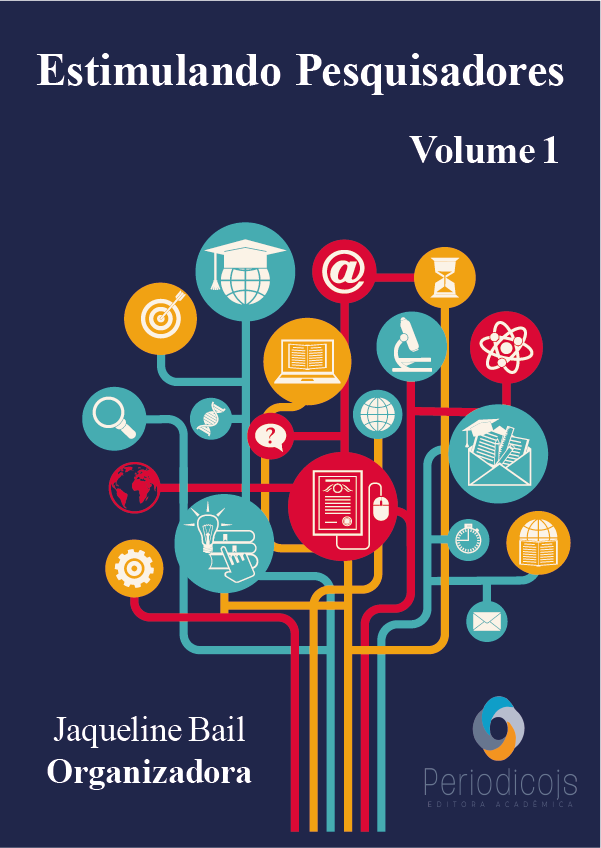Abstract
The wound healing process is a complex and dynamic event that is triggered by the existence of an injured tissue. Chronic skin lesions, especially those that affect patients with comorbidities, are one of the greatest examples of the stagnation phase of inflammation and that lead to healing problems. One of the most modern and recent alternatives in the field of tissue engineering that aims to propose new alternatives for the treatment of wound healing is nanotechnology. Thus, this study aimed to carry out an integrative literature review in order to relate the most recent and relevant studies on the latest innovations in the field of wound healing treatment that make use of nanostructured systems based on actives derived from Aloe vera . For this, searches were carried out in the Science Direct and Pubmed databases to search for articles related to the proposed theme. The final sample consisted of 12 scientific articles, according to previously established criteria. Several experimental studies involving nanostructured models in association with Aloe vera and other actives were analyzed, where they presented positive results regarding the possibility of application. Thus, it was concluded that despite the positive results obtained, it is still necessary to carry out new controlled clinical studies to support and prove the real effectiveness of these dressings.
References
BIALIK-WĄS, Katarzyna et al. Advanced SA/PVA-based hydrogel matrices with prolonged release of Aloe vera as promising wound dressings. Materials Science and Engineering: C, v. 120, p. 111667, 2021.
BOOTDEE, Kittima; NITHITANAKUL, Manit. Poly (d, l-lactide-co-glycolide) nanospheres within composite poly (vinyl alcohol)/aloe vera electrospun nanofiber as a novel wound dressing for controlled release of drug. International Journal of Polymeric Materials and Polymeric Biomaterials, v. 70, n. 4, p. 223-230, 2021.
CHEN, Honglei et al. A novel wound dressing based on a Konjac glucomannan/silver nanoparticle composite sponge effectively kills bacteria and accelerates wound healing. Carbohydrate polymers, v. 183, p. 70-80, 2018.
DEBJIT, Bhowmik et al. Aloe vera-gift to mankind. International Journal of Minor Fruits, Medicinal and Aromatic Plants, v. 5, n. 1, p. 1-6, 2019.
GARCIA-ORUE, Itxaso et al. Composite nanofibrous membranes of PLGA/Aloe vera containing lipid nanoparticles for wound dressing applications. International journal of pharmaceutics, v. 556, p. 320-329, 2019.
LOZOYA-AGULLO, Isabel et al. Segmental-dependent permeability throughout the small intestine following oral drug administration: Single-pass vs. Doluisio approach to in-situ rat perfusion. International journal of pharmaceutics, v. 515, n. 1-2, p. 201-208, 2016.
ZADEH GHARABOGHAZ, Morteza Najaf; FARAHPOUR, Mohammad Reza; SAGHAIE, Shahram. Topical co-administration of Teucrium polium hydroethanolic extract and Aloe vera gel triggered wound healing by accelerating cell proliferation in diabetic mouse model. Biomedicine & Pharmacotherapy, v. 127, p. 110189, 2020.
GHAYEMPOUR, Soraya; MONTAZER, Majid; RAD, Mahnaz Mahmoudi. Encapsulation of Aloe Vera extract into natural Tragacanth Gum as a novel green wound healing product. International journal of biological macromolecules, v. 93, p. 344-349, 2016.
GIANINO, Elizabeth; MILLER, Craig; GILMORE, Jordon. Smart wound dressings for diabetic chronic wounds. Bioengineering, v. 5, n. 3, p. 51, 2018.
HAN, George; CEILLEY, Roger. Chronic wound healing: a review of current management and treatments. Advances in therapy, v. 34, n. 3, p. 599-610, 2017.
JECKSON, Tracey Anastacia et al. Delivery of therapeutics from layer-by-layer electrospun nanofiber matrix for wound healing: An update. Journal of Pharmaceutical Sciences, 2020.
KHERADVAR, Shadi Alsadat et al. Starch nanoparticle as a vitamin E-TPGS carrier loaded in silk fibroin-poly (vinyl alcohol)-Aloe vera nanofibrous dressing. Colloids and Surfaces B: Biointerfaces, v. 166, p. 9-16, 2018.
MAAN, Abid Aslam et al. The therapeutic properties and applications of Aloe vera: A review. Journal of Herbal Medicine, v. 12, p. 1-10, 2018.
ORYAN, Ahmad et al. Healing potential of injectable Aloe vera hydrogel loaded by adipose-derived stem cell in skin tissue-engineering in a rat burn wound model. Cell and tissue research, v. 377, n. 2, p. 215-227, 2019.
RUBIO-ELIZALDE, Itzel et al. Scaffolds based on alginate-PEG methyl ether methacrylate-Moringa oleifera-Aloe vera for wound healing applications. Carbohydrate polymers, v. 206, p. 455-467, 2019.
SHAHBUDDIN, Munira et al. Glucomannan-poly (N-vinyl pyrrolidinone) bicomponent hydrogels for wound healing. Journal of Materials Chemistry B, v. 2, n. 6, p. 727-738, 2014.
SHI, Xiao-Dan et al. Structural and conformational characterization of linear O-acetyl-glucomannan purified from gel of Aloe barbadensis Miller. International journal of biological macromolecules, v. 120, p. 2373-2380, 2018.
SORG, Heiko et al. Skin wound healing: an update on the current knowledge and concepts. European Surgical Research, v. 58, n. 1-2, p. 81-94, 2017.
YANG, Bo et al. Konjac glucomannan/polyvinyl alcohol nanofibers with enhanced skin healing properties by improving fibrinogen adsorption. Materials Science and Engineering: C, v. 110, p. 110718, 2020.
ZAHEDI, Elahe et al. Fabrication and characterization of core-shell electrospun fibrous mats containing medicinal herbs for wound healing and skin tissue engineering. Marine drugs, v. 17, n. 1, p. 27, 2019.

